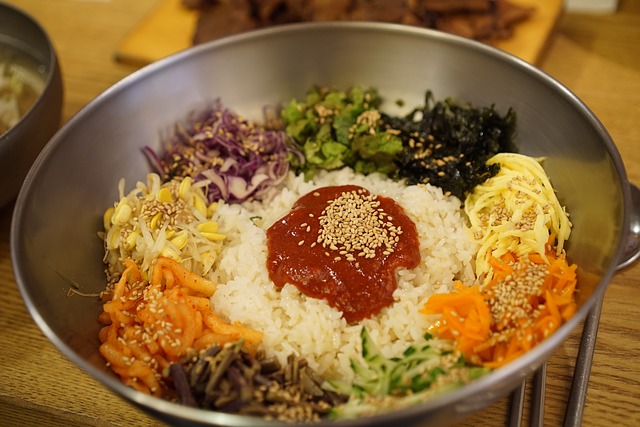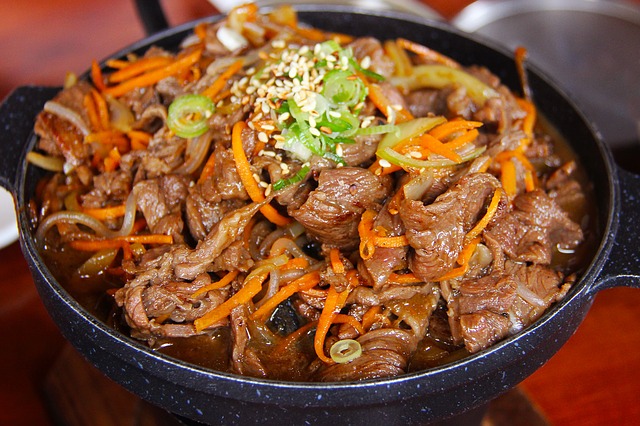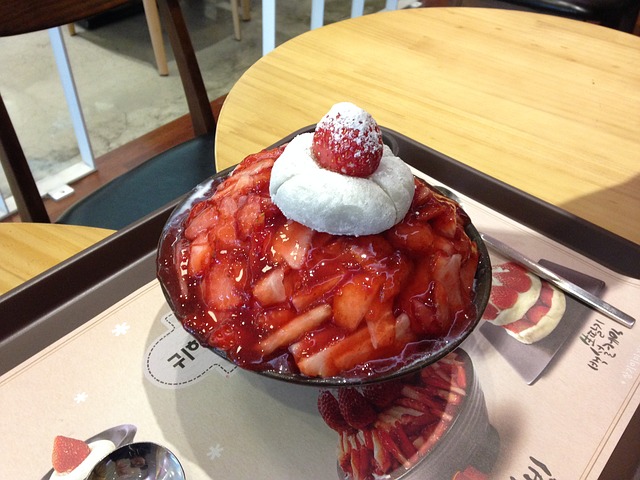
 |
 |
 |
 |

kimchi
Dating to the Shilla Dynasty (approximately 2,000 years ago), kimchi is the beloved side dish at every Korean table with rice. It's made by salting and preserving the cabbage in a bed of pepper, garlic, ginger and scallion. There are different kinds of kimchies: red cabbage kimchi named 'ggakdugi' (chopped radish kimchi), a popular side at local restaurants. 'Yeolmumul kimchi' is a less spicy kimchi made with young radish stalks floating in a tangy soup (Kim). All the kimchies compliments the white rice, which is the main dish for the Koreans.
(Picture by Chengzhu)

Bibimbop
This Korean lunch-in-a-bowl mixes together a simple salad of mixed vegetables (seasoned), rice, beef, and egg, with sesame oil and a drop of chili paste for seasoning. Koreans love how quickly and easily it is made from the sidedishes they have. It is normally served as a lunch (Kim).
(Picture by fudiwajura0)

Bulgogi
If 'galbi' represents Korean barbecue, then bulgogi is somewhere between the soup and barbecue. Bulgogi is a sweet meat dish, having existed in some form for over a thousand years, from the Joseon Dynasty. The dish is mostly served with rice, but for some people, they like to eat by itself only. The dish is also made in to a fusion: bulgogi-flavored burgers are part of the menu at fast food franchise named Lotteria, and there have also been adaptations like the bulgogi panini.
(Kim).
(Picture by sharonang)

Bingsu
Bingsu is the summer dessert, sweetened red beans and tteok are served on a bed of shaved ice (or milk) with condensed milk spread on the top. The misutgaru(powdered grains), syrup, ice cream, fruits, and any kind of snacks can be added on the top.The variations of bingsu, are made with ice cream or fruit, instead of using the sweetened bean paste. Classic patbingsu is loved by people; every bakery and fast food restaurant in Seoul will have patbingsu on its dessert menu (Kim).
(Picture by Kwangholee)

Flag of the South Korea (Public Domain)
